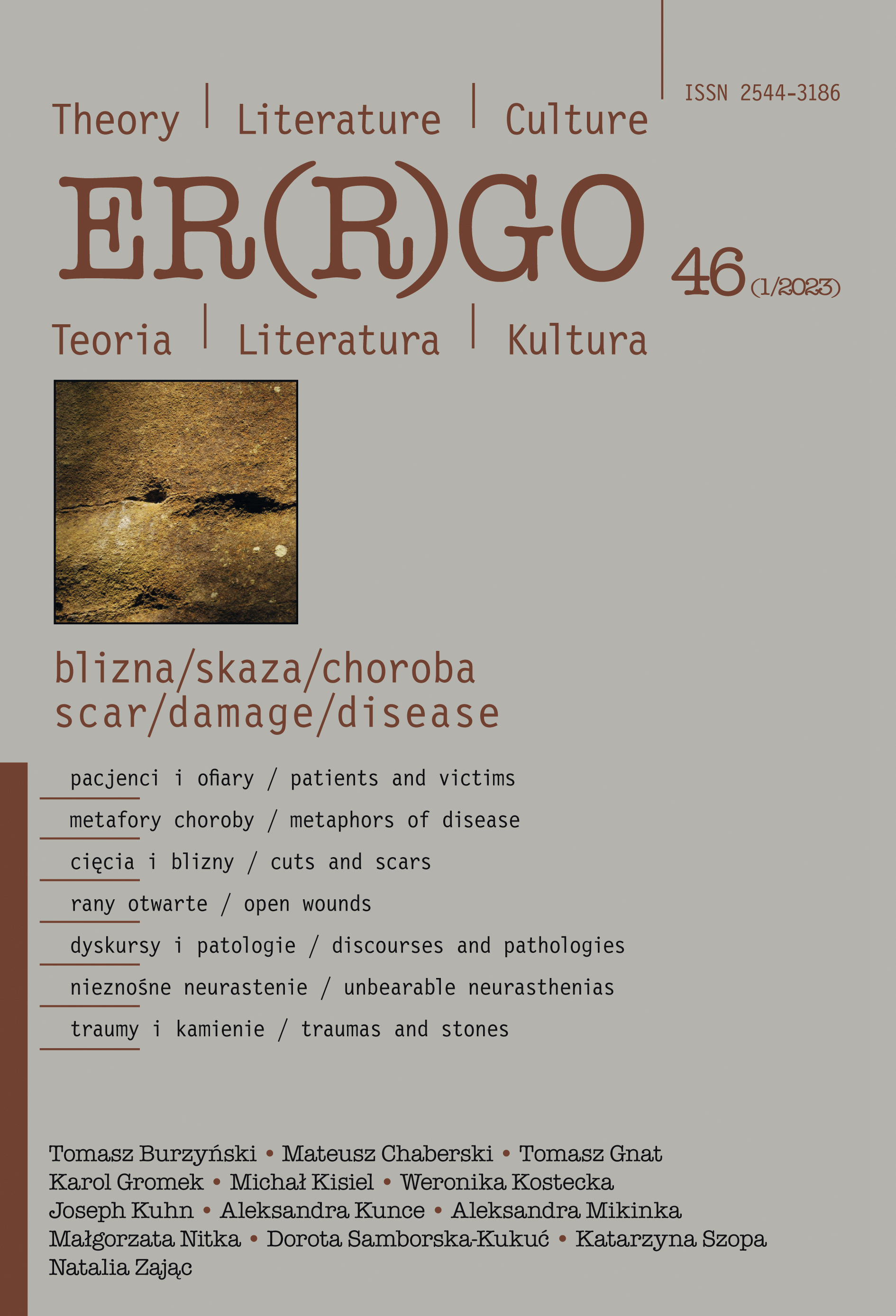Trauma Engraved in Stone. Material Community and the Singularity of a Traumatic Affect in Yusef Komunyakaa’s “Facing It”
Trauma Engraved in Stone. Material Community and the Singularity of a Traumatic Affect in Yusef Komunyakaa’s “Facing It”
Author(s): Michał KisielSubject(s): Anthropology, Psychology, Studies of Literature, Epistemology, Ethics / Practical Philosophy, Renaissance Philosophy, Early Modern Philosophy, 19th Century Philosophy, Contemporary Philosophy, Culture and social structure , Studies in violence and power, Victimology, Theory of Literature, Ontology, American Literature
Published by: Wydawnictwo Uniwersytetu Śląskiego
Keywords: trauma; the Vietnam War; Vietnam Veterans Memorial; Yusef Komunyakaa; posthumanism; new materialism
Summary/Abstract: The purpose of this article is to trace the behaviour of a traumatic affect based on the reading of Yusef Komunyakaa’s “Facing It,” a poetic ekphrasis of the Vietnam Veterans Memorial. Tracing the manners in which war trauma is worked through and acted out by the speaker, this paper discusses how trauma eludes both compensating processes. At the same time, the nonhuman or inhuman features of trauma are analysed alongside the nonhuman agency of the memorial. The intersection of both nonhuman modes of being makes it possible to align the trauma discourses with materialist criticism. In addition, the traumatic experience is discussed through its tactile connotations following Komunyakaa’s poem and Maya Lin’s commentaries to her monument. Touch turns out to be a potent category capable of capturing the dynamics of a traumatic affect and a promising trope on which new ethical modes of being together in trauma might be founded. Hence, the aim of this article is fourfold; it attempts to: (1) analyse how Komunyakaa’s poem, informed by the selected developments in materialist criticism and trauma studies, might illustrate and expand the affect of trauma; (2) deepen our understanding of the intersections of the material and the traumatic; (3) investigate how the speculative reorganisation of human and nonhuman boundaries, inspired by “Facing It,” might help in assessing trauma, which necessarily resides at the edges of subjectivity; and (4) propose how the figure of trauma based on vulnerable and transformative limits might revise our understanding of community and formulate an ethical obligation for the traumatic times we live in.
Journal: ER(R)GO. Teoria-Literatura-Kultura
- Issue Year: 1/2023
- Issue No: 46
- Page Range: 133-151
- Page Count: 19
- Language: English

